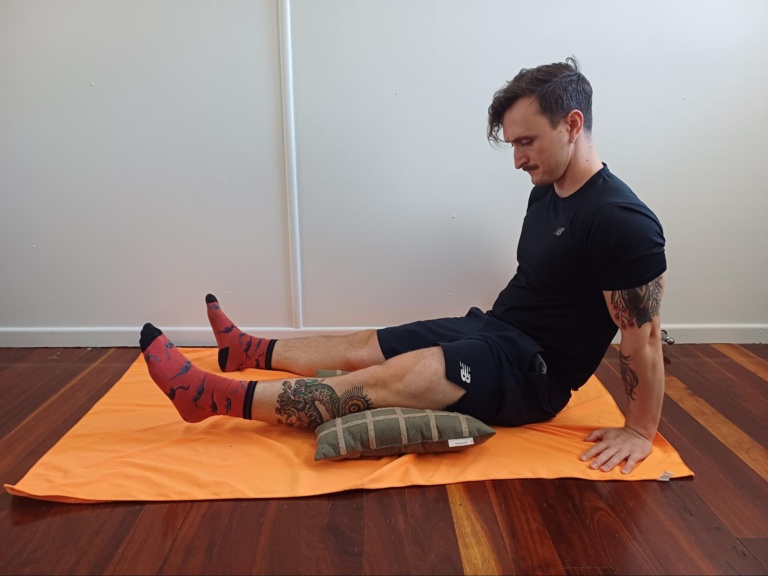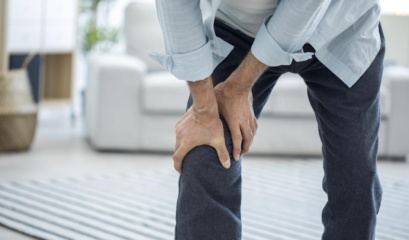The Medial Collateral Ligament (MCL) is vital for stabilising the inner knee during movements like twisting and side-stepping. MCL injuries are common, especially among athletes in contact sports or activities requiring quick directional changes. This guide provides MCL rehab exercises to support your recovery at all stages.
How MCL Injuries Occur
MCL injuries typically result from a direct impact to the outer knee or a sudden twist, causing the ligament to stretch or tear. Injuries range from mild sprains to severe tears. For more information, read our blog on MCL injuries.
Effective MCL Exercises for Recovery
Rehabilitation exercises are crucial for healing an MCL injury. A structured rehab program enhances recovery and restores knee function. Below is a general rehab protocol to guide you through various stages:
Weeks 0-2
Focus: Manage pain and swelling, restore range of motion (ROM), and begin gentle strengthening.
Range of Motion (ROM)
- Heel Slides
- Sit or lie down with legs extended.
- Gently slide your heel toward your buttocks as far as comfortable.
- Return to the starting position.
- Repeat 10 times, several times daily.
- Quad Contractions

- Sit with your injured leg extended.
- Tighten your thigh muscles, pressing the back of your knee into the floor.
- Hold for 5 seconds, then relax.
- Perform 10 repetitions, multiple times a day.
Strengthening Exercises
- Straight Leg Raises

- Lie on your back with one knee bent and the injured leg straight.
- Tighten your thigh muscles and lift the injured leg about 6 inches off the ground.
- Hold for 5 seconds, then lower slowly.
- Repeat 10 times, working up to 3 sets.
Modalities
- Ice Therapy
- Apply ice packs to the knee for 15-20 minutes every 2-3 hours to reduce swelling.
- Compression and Elevation
- Use a compression bandage and keep the leg elevated when possible.
Weeks 2-6
Focus: Increase ROM, improve muscle strength, and begin proprioceptive exercises.
Range of Motion (ROM)
- Hamstring Stretches

- Sit with legs extended.
- Lean forward until you feel a gentle stretch in the back of your thigh.
- Hold for 20-30 seconds.
- Repeat 2-3 times.
Strengthening Exercises
- Wall Squats

- Stand with your back against a wall.
- Slowly slide down into a partial squat (no more than 45 degrees).
- Hold for 5-10 seconds, then rise back up.
- Perform 10 repetitions.
- Calf Raises
- Stand while holding onto a support.
- Raise up onto your toes, then lower back down.
- Do 15 repetitions for 2-3 sets.
Proprioception Exercises
- Single-Leg Balance

- Stand on your injured leg for 30 seconds.
- Increase difficulty by closing your eyes or standing on a cushion.
- Repeat 3 times.
Weeks 6-12
Focus: Restore full strength, enhance balance, and resume normal activities.
Strengthening Exercises
- Lunges
- Step forward with your injured leg.
- Lower your body by bending both knees, keeping the front knee over the ankle.
- Push back to the starting position.
- Perform 10 repetitions for 2-3 sets.
- Step-Ups
- Step onto a low platform with your injured leg.
- Step back down slowly.
- Do 10-15 repetitions.
Proprioception and Agility
- Wobble Board Exercises

- Stand on a wobble board to improve balance.
- Shift weight side-to-side and front-to-back.
- Perform for 2-3 minutes.
Weeks 12 and Beyond
Focus: Return to sport-specific activities and advanced strengthening.
Advanced Strengthening
- Plyometric Exercises
- Jump Squats
- Perform a squat, then explode upward into a jump.
- Land softly and repeat 10 times.
- Lateral Hops
- Hop side-to-side over a line or cone.
- Do 15 repetitions each direction.
- Jump Squats
Agility Drills
- Figure-Eight Runs
- Run in a figure-eight pattern to improve directional change.
- Start slowly and increase speed as tolerated.
- Carioca Steps
- Perform a grapevine step pattern to enhance lateral movement.
- Practice for 2-3 minutes.
Getting Back to Sport
Recovery time varies based on injury severity and individual healing. It’s crucial not to rush this process. Ensure your knee demonstrates full strength, stability, and is pain-free before resuming sports. Always follow your physiotherapist’s guidance to prevent re-injury.
Disclaimer
Please consult your physiotherapist or surgeon before starting any MCL rehab exercises mentioned here. Each injury is unique, and your healthcare provider can offer personalized advice tailored to your recovery needs.









